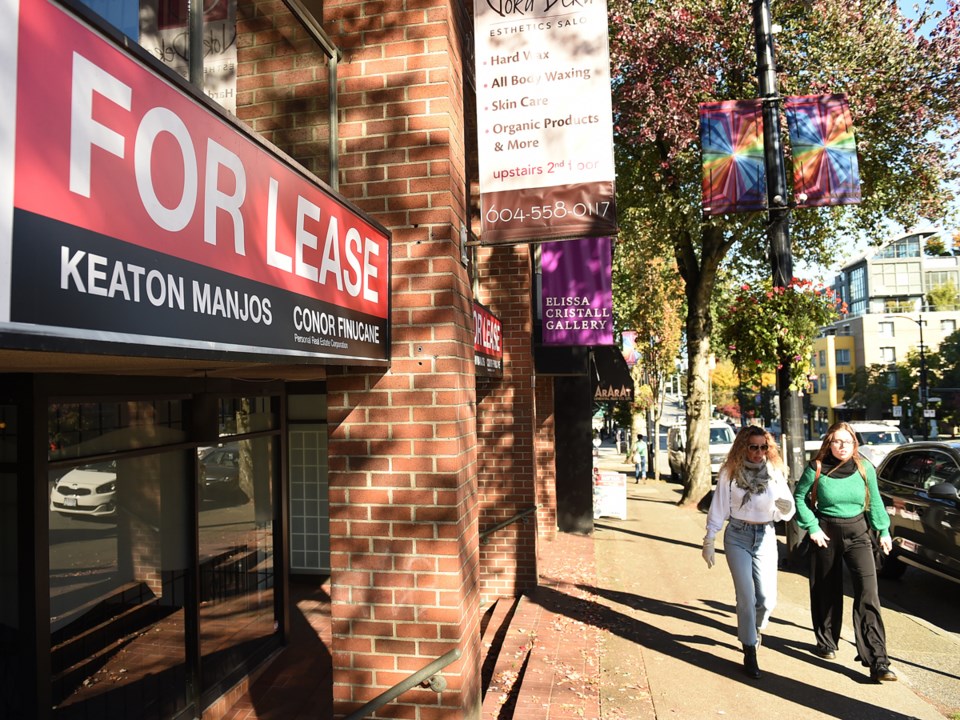What’s been heard time and again anecdotally over the last five years was made official Tuesday with a City of Vancouver document that cost $100,000 to produce.
In news that isn’t really news to most in the commercial sector: Small independent businesses can’t withstand ever increasing property tax bills or arduous turnaround times for permits.
Not only that, but small, independent business retention in marquee shopping areas such as South Granville and West Broadway is becoming harder and harder to achieve.
Those are just a few of the highlights of a city staff presentation that looked at six neighbourhoods across Vancouver to gauge everything from business climate and impediments to vacancy rates and triple net leases.
The study began last year and focused on areas that have relatively similar zoning, are each experiencing neighbourhood-wide changes and stretch across both north-south and east-west corridors in the city: South Granville, West Broadway, Marpole, Collingwood, Commercial Drive and Hastings North.
Business improvement associations offered input, along with individual businesses, employees and members of the public. Consultants and city staff also canvassed neighbourhoods on foot to supplement the research process.
All of this turned up seven major red flags:
- affordability, property taxes, assessments and lease rates
- safety
- parking and street access
- permitting and licensing times
- labour costs and employee retention
- lease issues such as triple net and demolition clauses
- changing neighbourhood demographics.
“We found that while there has not been a significant increase in chain businesses replacing independents in most of our study areas, vacant storefronts have become more prominent in many of the study areas,” said senior planner Matthew Bourke.
As reported exclusively in the Courier last fall, South Granville is taking major hits. At the time, the Courier counted about 25 for lease signs along a 10-block span that saw longtime tenants the Ouisi Bistro, West and Plum all close within months of one another.
It had by far the least independently-owned businesses of the six areas studied, and it wasn’t even close. Forty-seven per cent of businesses in the area falls under that distinction, while the nearest comparable was West Broadway at 66 per cent. The high water mark was Commercial Drive, where 80 per cent of businesses are independent.
South Granville lost 11 per cent of its indie shops between 2006 and 2019, a number that again led all neighbourhoods in the study.
The study used a 10 per cent vacancy threshold as an indicator of viability in business neighbourhoods. Only Collingwood and Hastings North met that threshold, though the other four areas hovered between 11 and 12 per cent.
And while property taxes and available parking are quantifiable indicators, others are not. Vacant storefronts add to perceptions around the viability or safety of neighbourhoods, the study found.
Consultants who helped author the report noted the volatility of the retail sector and how no two neighbourhoods will yield identical findings. In some cases, a larger big box retailer is welcomed by a business district because it’s seen as an anchor tenant that will attract more shoppers and parking. The opposite can be said in other neighbourhoods.
Exacerbating the issue is a formula commonly used by retailers that measures rent to sales ratio. If the rent is 20 per cent of the bottom line, retailers typically abandon ship. Vancouver is seen as the second most expensive city in the North America, if not the world.
Though not part of the study area, city planner Peter Vaisbord pointed to some of the challenges facing Point Grey and other businesses on the West Side. Changing demographics are such that family sizes are smaller and less money is spent. Anchor business are leaving the area, taking jobs with them. A huge chunk of money once spent directly in the neighbourhood is now being spent at UBC.
Several councillors proposed a vacant storefront tax, similar in function to the tax on empty homes. Staff said it was an idea worth exploring, but not something that could be endorsed right now.
NPA Coun. Sarah Kirby-Yung suggested that vacant storefronts be used by struggling arts groups on a temporary basis.
Tuesday’s report was seen as phase one in a larger study, while phase two is expected this summer. Each report will cost $100,000 to produce.



